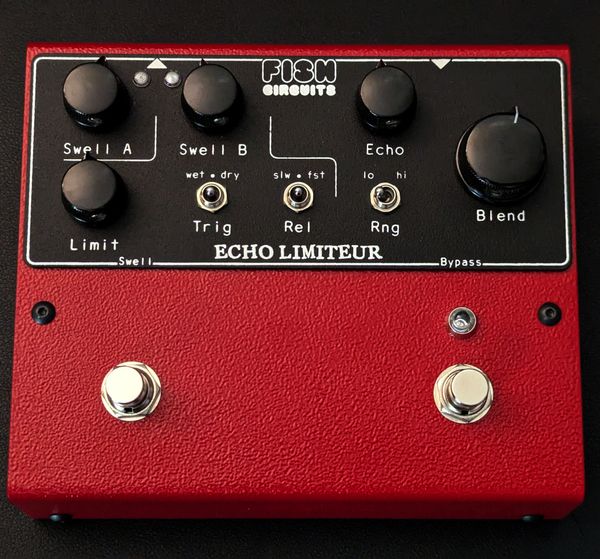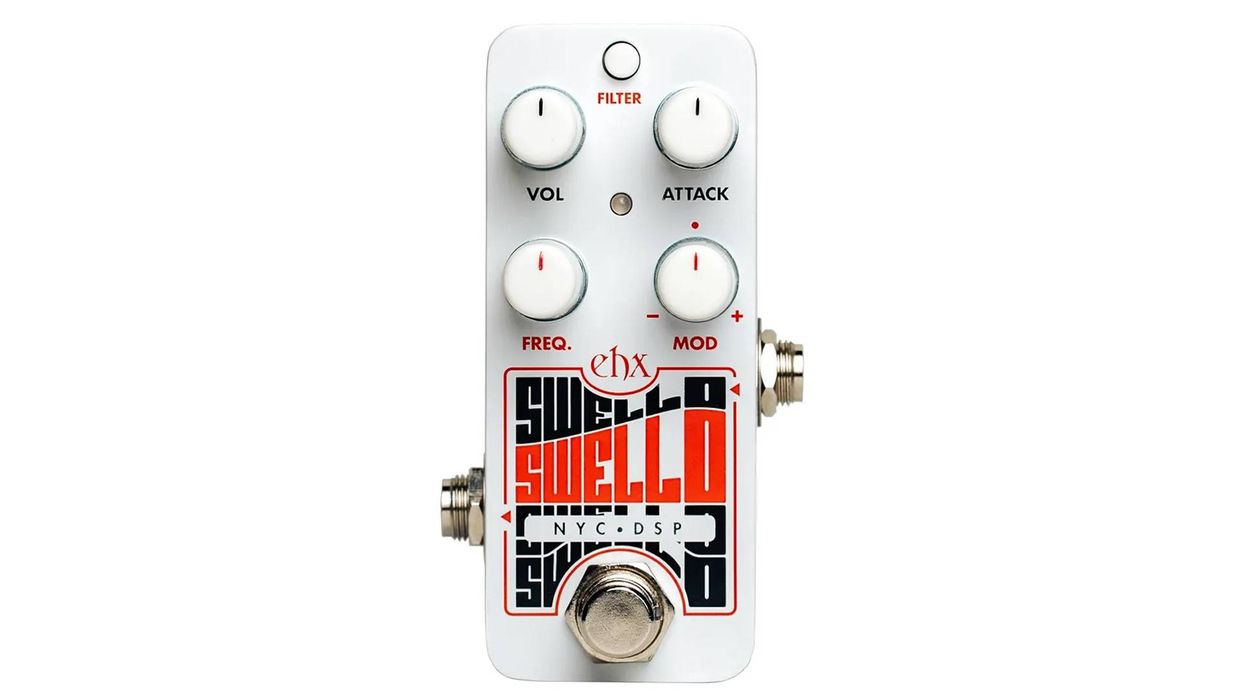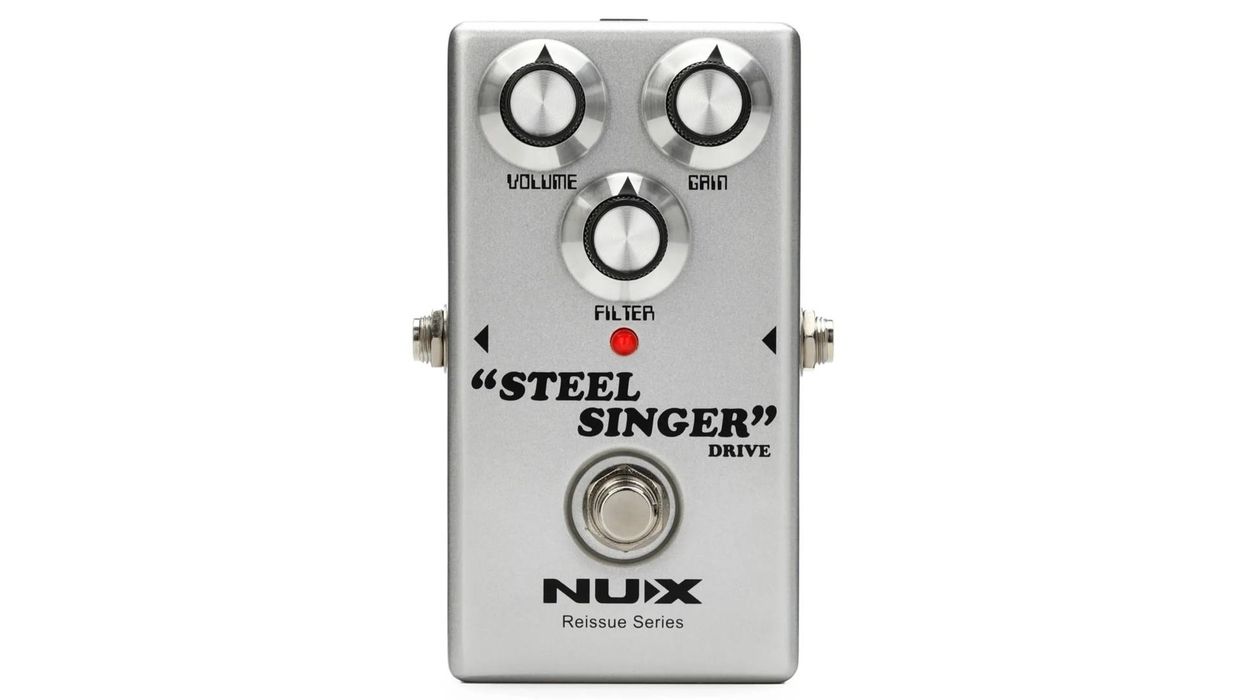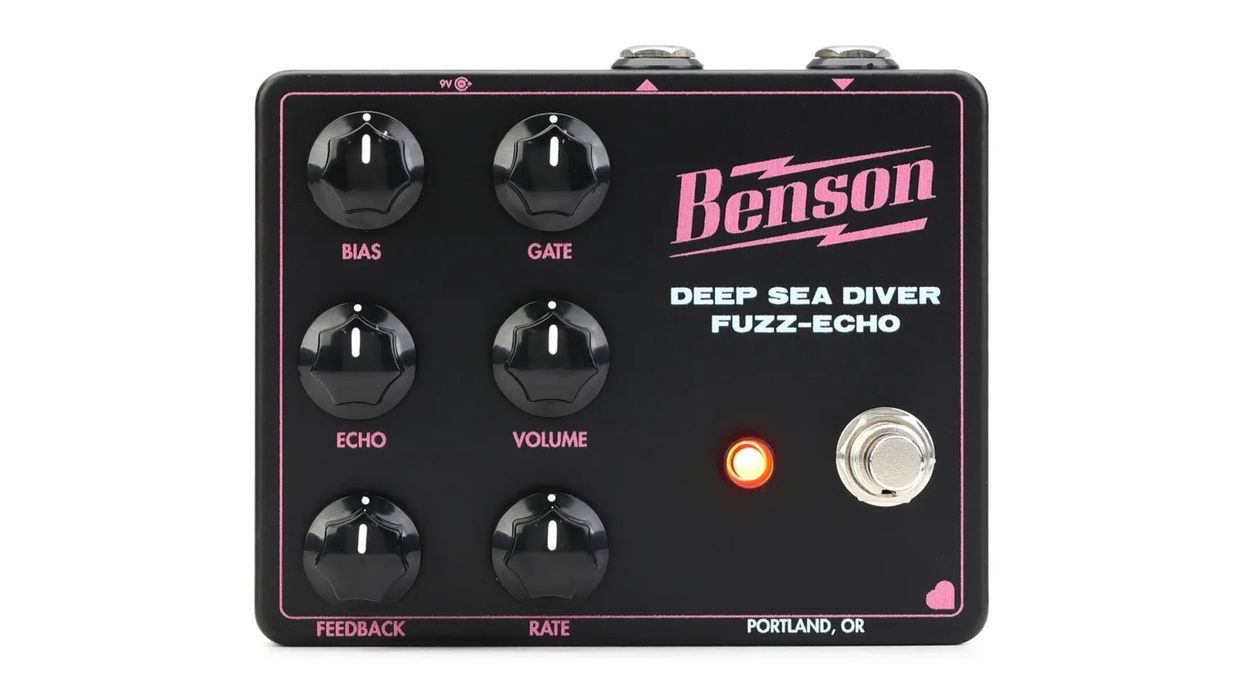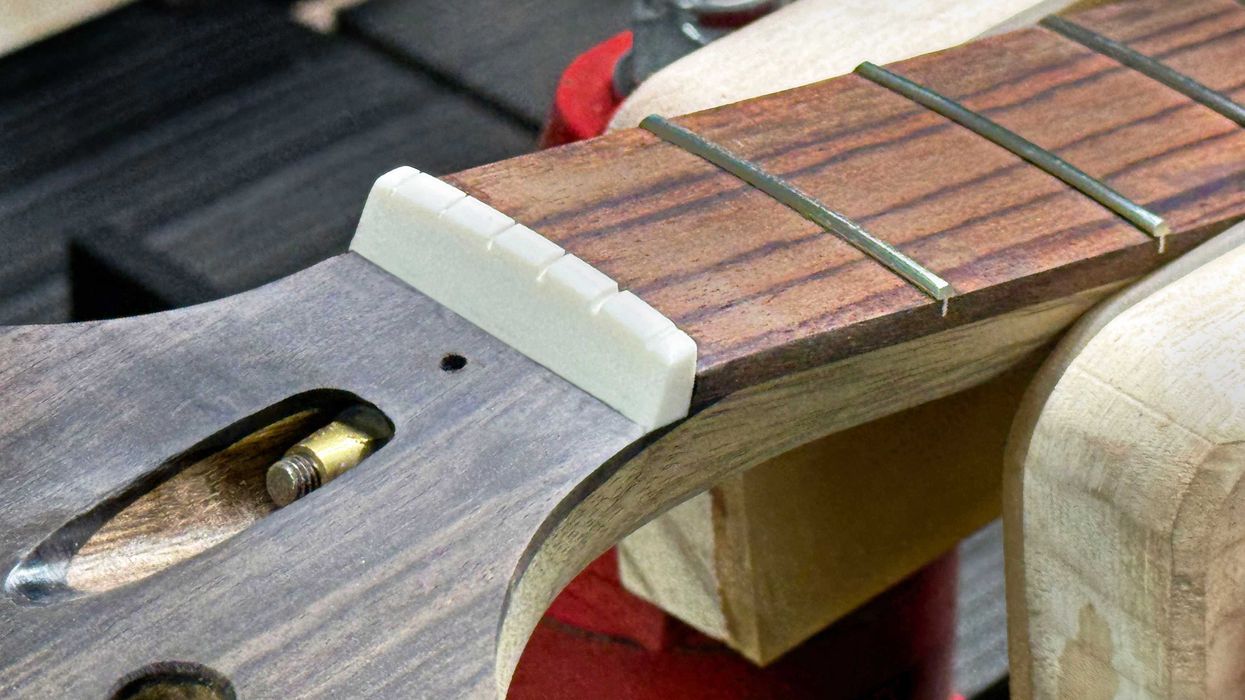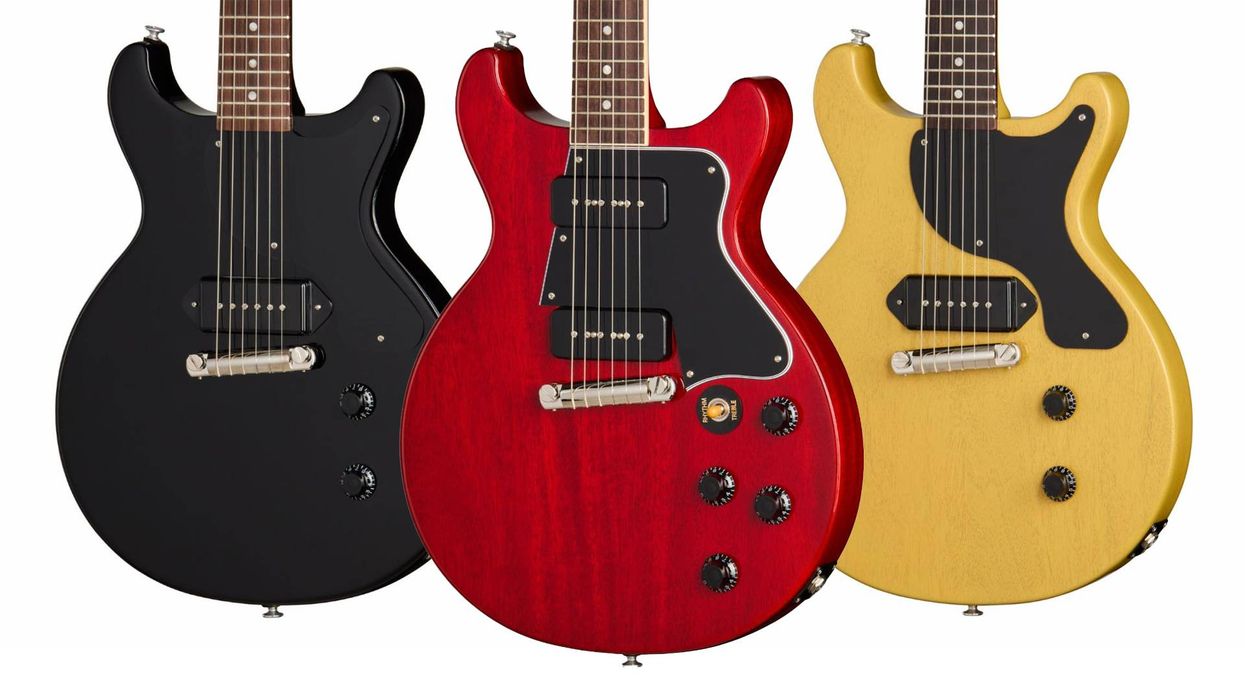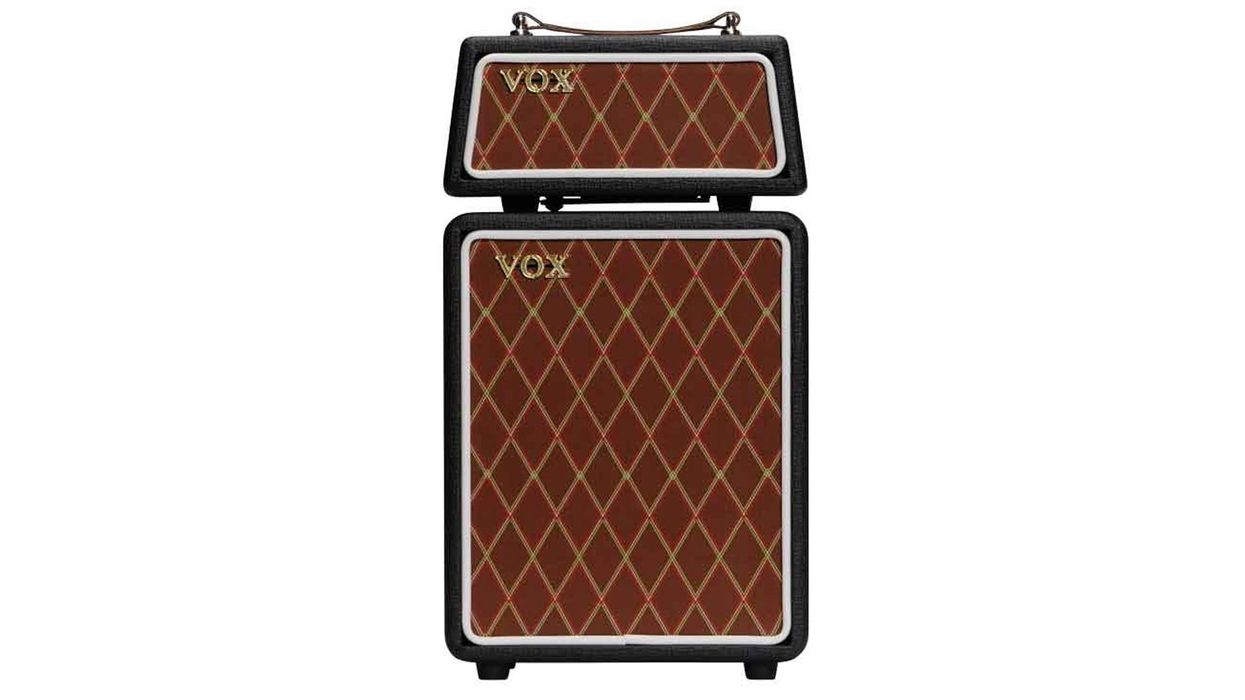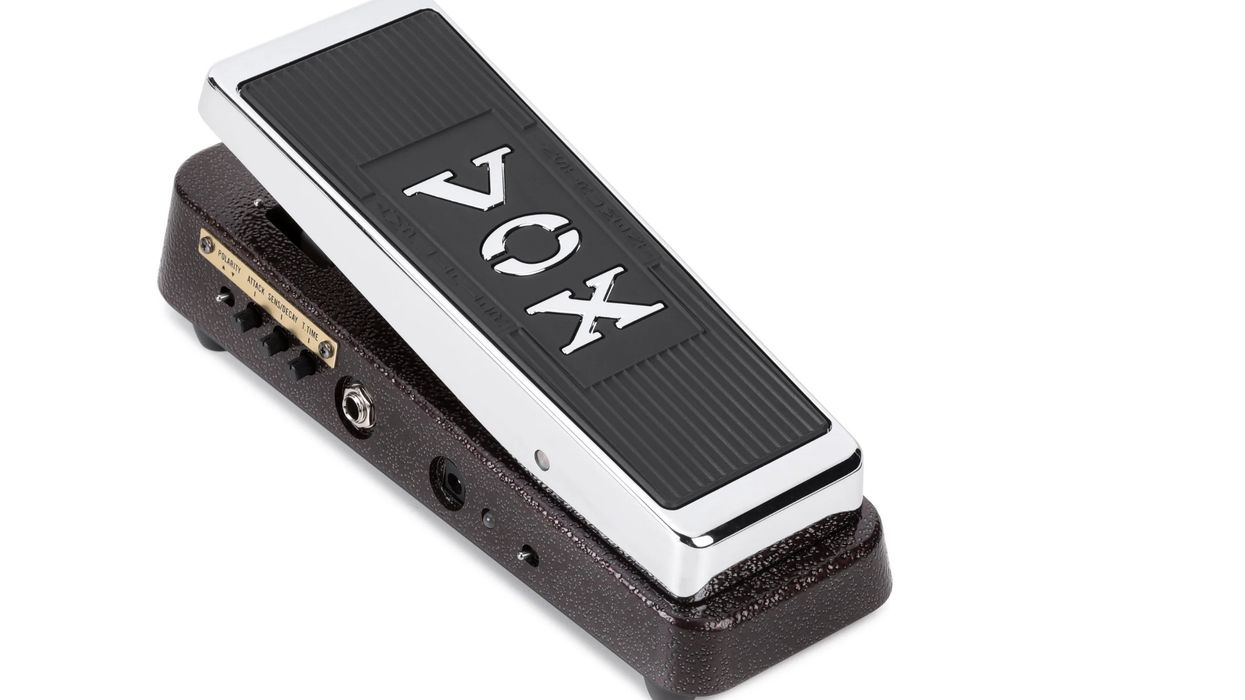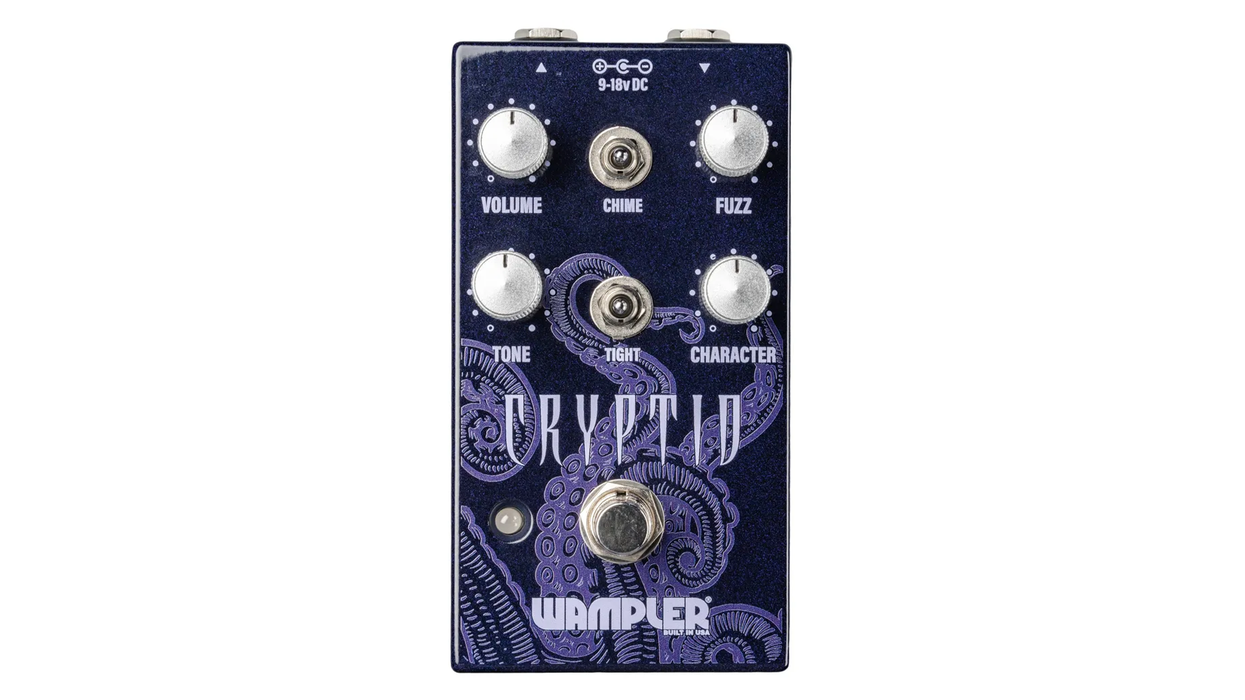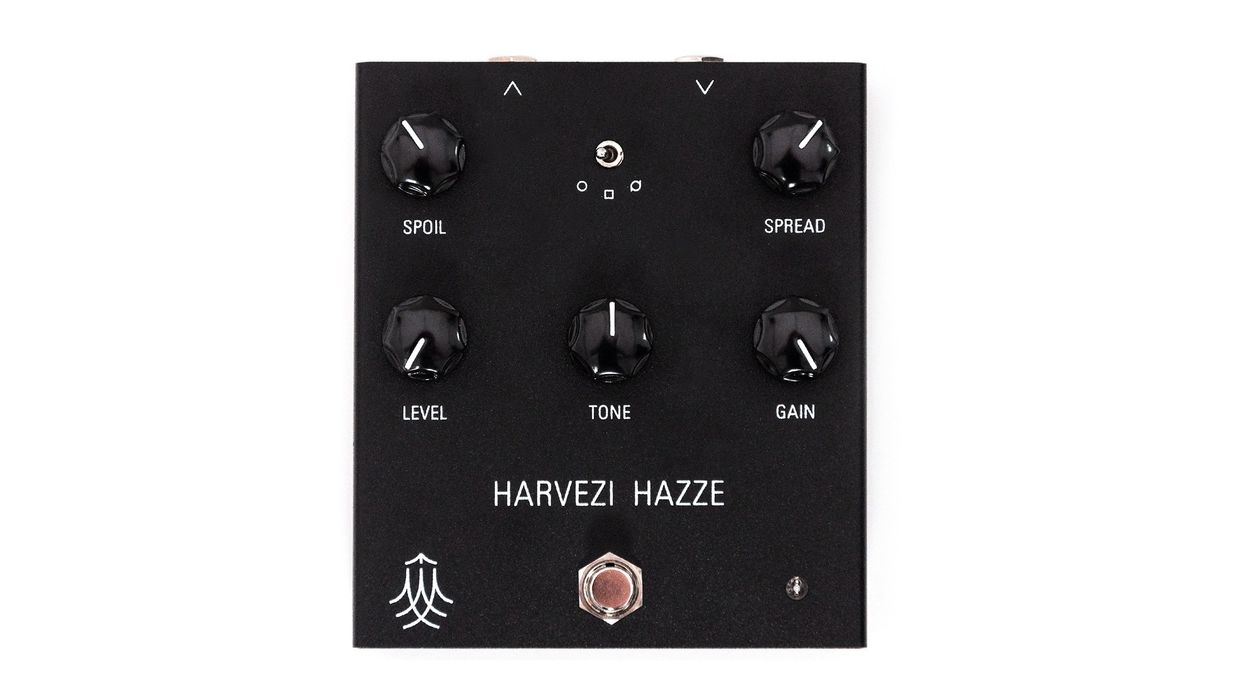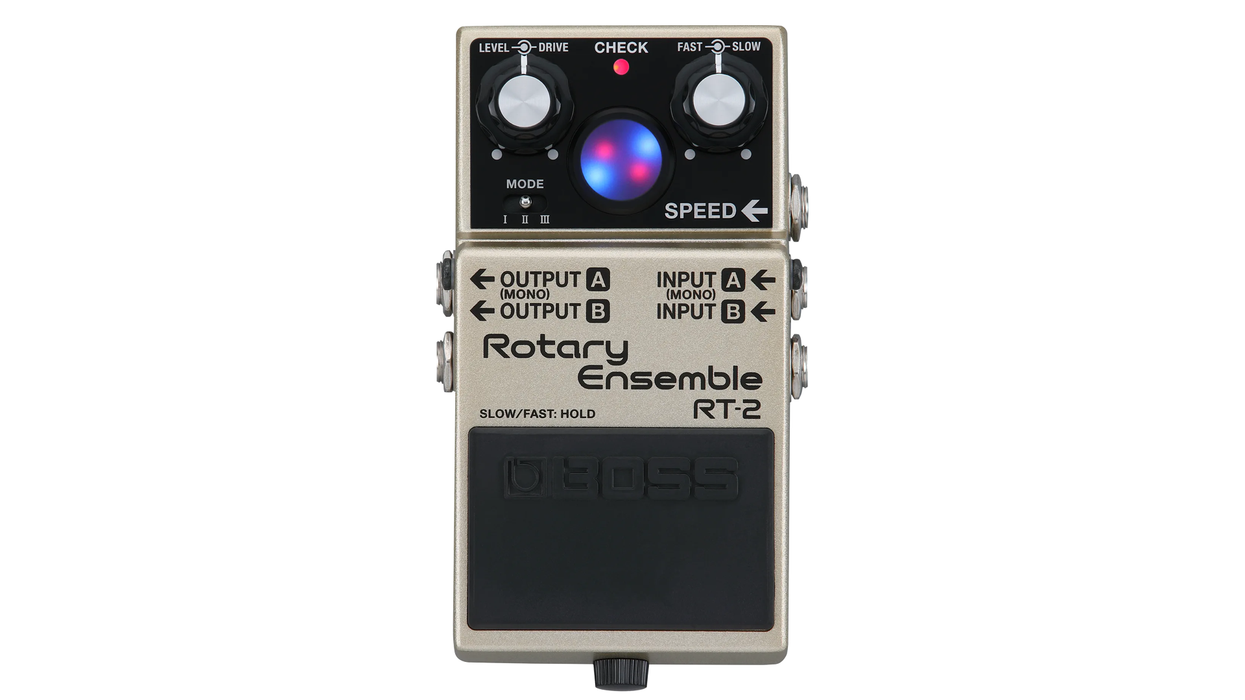Montreal’s Fish Circuits, helmed by builder Mike Poisson, has made quite a splash the past few years with colorful offerings like the Model One, Lunatique, and most recently the Astronomie, a dynamic reverb that can swell in and out depending on settings and playing style. Fish Circuits’ first delay, the Echo Limiteur, comes in a characteristically sleek box that, like all their others, could be used as a bludgeon. But with an analog delay, a second digital delay, and a limiter, its utility as a tool for defense pales in comparison to the sounds its circuitry produces.
Swell Set Of Features
The Echo Limiteur consists of two delay modes, swell A and swell B. Swell A is a straightforward delay channel, governed just by the global echo and blend knobs and the range switch. The last of these shortens or lengthens the delay-time range of the echo control. “Hi” gives you longer delay times (up to 1150 milliseconds) and slightly cleaner repeats courtesy of the digital PT2399 chip, while “Lo” gives you lower-fidelity repeats and a shorter sweep of possible delay times (up to 650 milliseconds). Both swell A and swell B knobs control the number of repeats.
The limiter affects the swell B mode alone. It limits the delay feedback and can be triggered dynamically by the dry signal, wet signal, or both. This effectively means you can use infinite repeats that won’t overpower your dry sound and/or infinite repeats that reset each time you pick a note or chord. The release switch tells the limiter how quickly to lay off the limiting, while the trigger lets you decide whether a dry, wet, or combined signal activates the limiter. Limit, meanwhile, controls the sensitivity of the trigger: All the way counter-clockwise, it’s nearly non-existent, while fully clockwise, the slightest noise in your signal will trigger the limiter, chopping the repeats. All three controls are extremely interdependent.
Got it? Probably not. You have to physically experience the responses of each of these features to really grasp how they manipulate the signal. And there will be some who wish the Echo Limiteur’s switch-controlled functions were more deeply tweakable. Not me though; we are in the age of the pedal-builder-as-auteur, and I loved allowing my playing to be guided by Poisson’s preset parameters.
Push it to the Limit
Playing through the dynamic-delay side of the Echo Limiteur immediately expands the possibilities of your instrument. Because it responds to playing dynamics, it’s not exaggerating to say there are endless ways to apply the Echo Limiteur. You can set it for a cavalcade of tight, spiraling repeats that cut out sharply the second you play another note, or you can tone down the limiter so that it only cuts off the delay when you play hard. In this arrangement, you can pick delicately beneath a bed of towering, oscillating feedback and pull the plug on the delay just by strumming a bit harder. If you want to bail on the dynamic aspect entirely, you just hit the left footswitch and you’re in regular delay land (the right one is the on/off switch).
Thanks to the analog MN3005 chip, the repeats are foggy, greasy, and frayed. But the augmented repeat lengths—courtesy of the digital PT2399 chip—extend the pedal’s utility. My only gripe is that I wish the Echo Limiteur was capable of even shorter, tighter delay times. It bottoms out at roughly 100 milliseconds, which means you can’t use the dynamic limiter with the most slashing and jittery machine-gun repeats.
The Verdict
The Echo Limiteur already feels destined to be a classic. The potential applications in live contexts, in particular, are thrilling to consider, and I’m sure that in the years to come, we’ll hear new music defined by the Echo Limiteur’s many voices.
